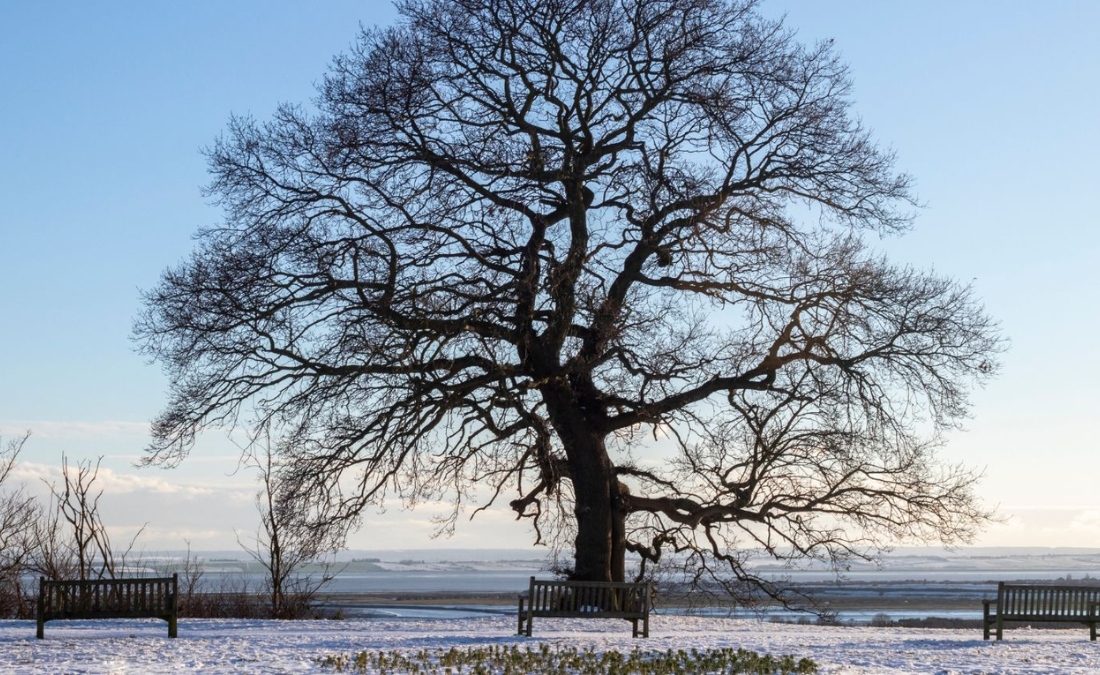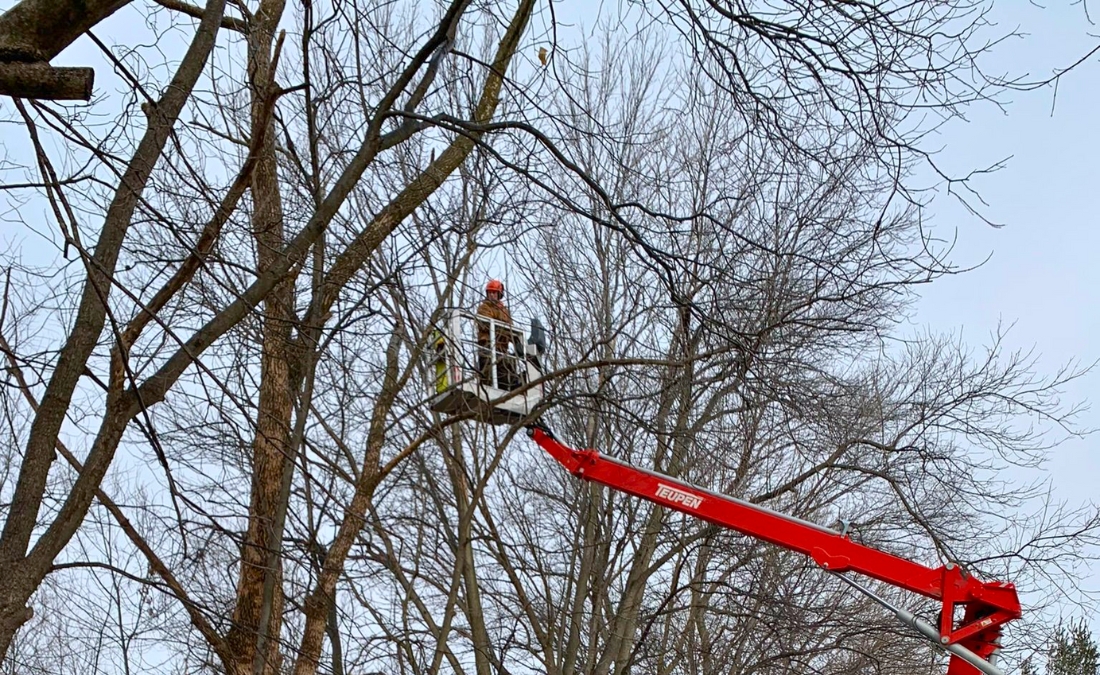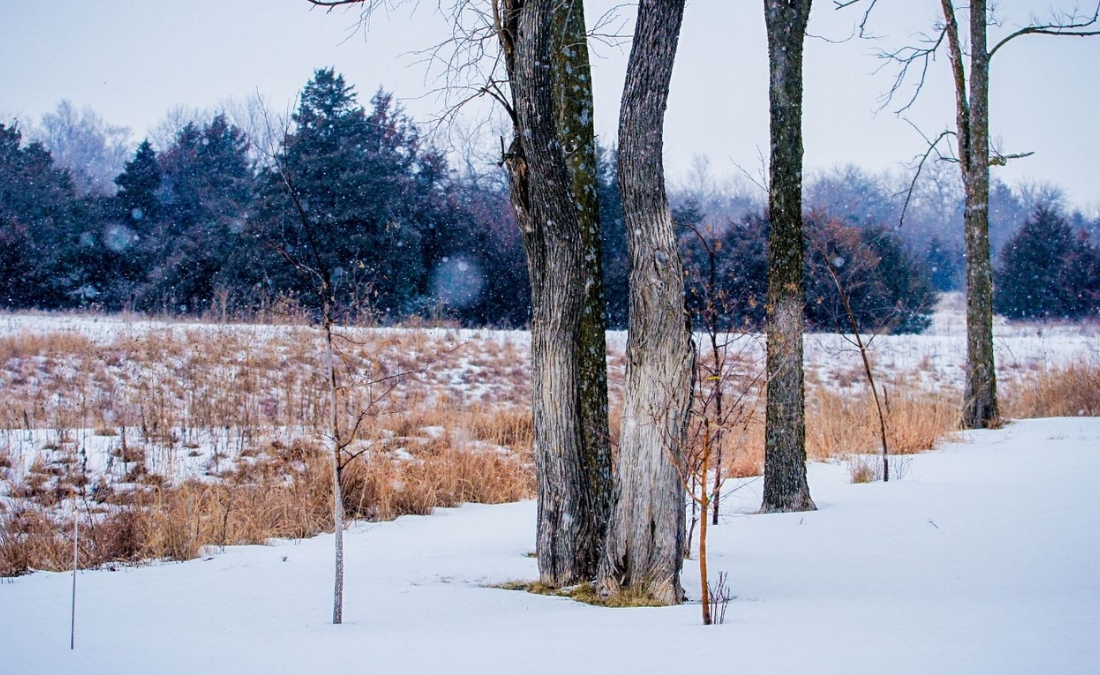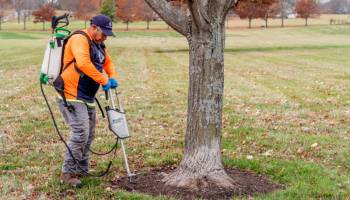How to Make Your Midwest Trees’ Fall Colors More Vibrant: A Tree Care Guide for Spectacular Autumn Foliage
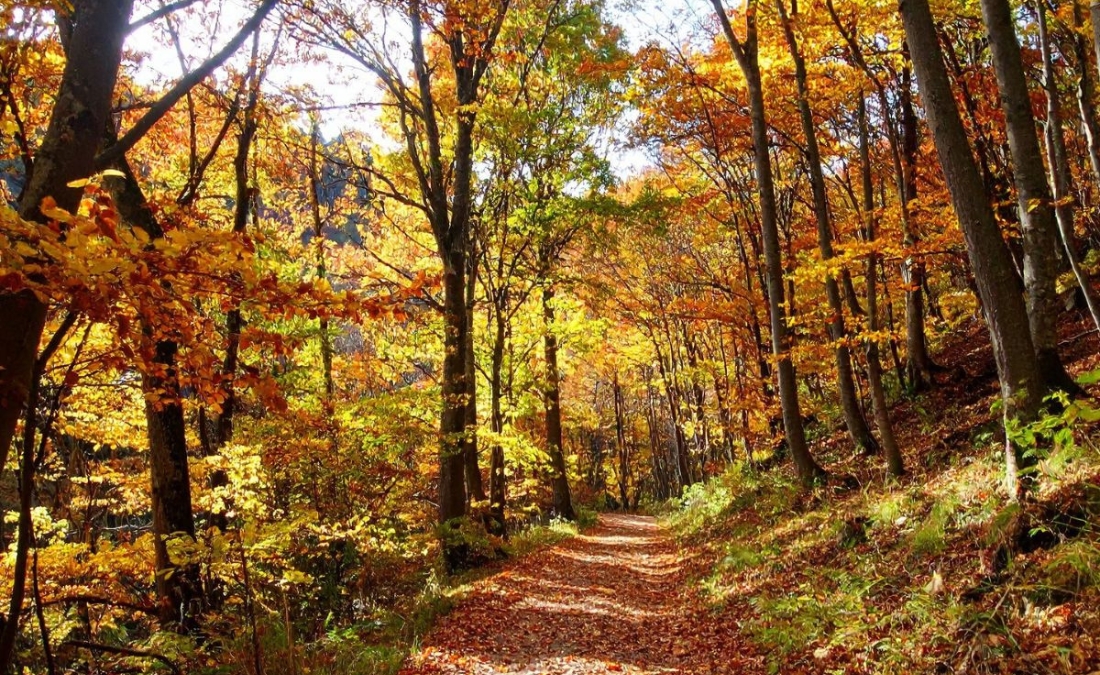
Tired of dull fall trees? Discover proven methods to enhance fall tree colors in the Midwest through strategic fertilization, pruning & soil treatments.
Every autumn across the Midwest, from the rolling hills of Liberty and Parkville to the suburban neighborhoods of Des Moines and Oklahoma City, homeowners watch as their trees transform into nature’s most spectacular light show. But some trees steal the spotlight with blazing reds, brilliant oranges, and golden yellows, while others fade into disappointing browns or drop their leaves before reaching peak color.
The secret to enhancing fall tree colors in the Midwest isn’t luck or genetics alone. It’s strategic tree care that begins now and continues year-round. Through decades of working with Midwest trees, the Arbor Masters team has identified the specific care practices that consistently produce the most spectacular autumn displays.
Key Takeaways
- Strategic fall fertilization provides trees with essential nutrients needed to produce vibrant pigments, especially important for Missouri, Kansas, and Iowa trees facing harsh winter conditions.
- Professional soil testing identifies specific nutrient deficiencies preventing optimal fall colors in your property.
- Proper winter pruning timing improves tree structure and energy distribution for enhanced color production across the Midwest.
- Disease prevention treatments protect trees from conditions like iron chlorosis that turn potential reds and oranges into disappointing yellows.
- Consistent watering schedules during summer stress periods ensure trees have the energy reserves needed for spectacular fall transformations.
- Species-specific care programs maximize the natural color potential of native Midwest trees like sugar maples, red oaks, and hickories.
How Does Fall Color Develop?
Fall color changes are controlled by three types of pigments in leaves:
- Chlorophyll: Gives leaves their summer green color and masks other pigments during the growing season.
- Carotenoids: Provide yellow and orange colors that were always present but hidden by chlorophyll. These pigments help protect leaves from light damage and assist in photosynthesis during the growing season.
- Anthocyanins: Create show-stopping reds and purples, produced fresh each fall when sugars become trapped in leaves. These pigments act as natural sunscreen, protecting trees from harmful UV radiation during the transition to dormancy.
Why Do Some Trees Have Better Fall Colors Than Others?
Some trees consistently produce spectacular fall displays while others on the same street remain disappointing because of differences in tree health and care. While weather conditions affect timing and intensity, the primary factor determining fall color quality is how well-nourished and healthy individual trees are throughout the growing season.
Here’s the crucial point: only healthy, well-nourished trees have the energy to produce abundant anthocyanins. Trees stressed by nutrient deficiencies, drought, disease, or poor soil conditions simply can’t manufacture these vibrant red pigments effectively. That’s why you’ll see some red oaks in places like Kearney or Odessa turn brilliant crimson while others on the same street remain a dull yellow-brown.
EXPERT INSIGHT: “When it comes to fall color, timing tells a story. The trees that turn first aren’t always just putting on a show; early color can be a sign of stress. Maples with girdling roots often turn red weeks early, crabapples drop leaves from apple scab, and pin oaks or river birches can fade too soon from nutrient deficiencies. With the right care, we can correct these issues and help your trees produce a healthier, more vibrant display next fall.” – Stephen Carlson, Director of Sales, Arbor Masters
Which Midwest Trees Produce the Most Spectacular Fall Colors?
Selecting the right tree species dramatically impacts your property’s fall color potential, and understanding which trees thrive in specific Midwest conditions helps homeowners make informed planting decisions. Native species consistently outperform non-natives in color intensity and reliability across our diverse climate zones.
Premium Color Performers for Missouri and Kansas
- Sugar Maples: Reign supreme for fall color across the northern Midwest, producing brilliant orange-red displays in Liberty, Parkville, and Kansas City’s northern suburbs.
- Red Oaks: Offer reliable red to russet colors and adapt well to various soil types throughout eastern Kansas and western Missouri. Northern red oaks particularly excel in areas around Columbia, Jefferson City, and Lawrence, providing long-lasting color displays that often persist into November.
- American Elm Cultivars: Modern disease-resistant varieties like ‘Princeton’ and ‘Valley Forge’ produce brilliant yellow fall colors while resisting Dutch elm disease. These trees work well in urban environments across Des Moines, Omaha, and Cedar Rapids.
Exceptional Choices for Oklahoma and Southern Areas
- Bald Cypress: Provides unique russet-orange colors in fall before dropping its needles, making it ideal for wet areas around Tulsa and Oklahoma City. This deciduous conifer tolerates both flood and drought conditions while providing reliable color.
- Sweet Gums: Produce multi-colored displays with yellow, orange, red, and purple all appearing on the same tree. However, these trees require iron supplementation in alkaline soils to prevent chlorosis that reduces color quality.
Reliable Native Options Across All Regions
These native species provide consistent fall color with minimal maintenance requirements:
- Black Cherry: Bright yellow fall colors, adapts to various soil conditions.
- Hickories: Golden-yellow displays that complement other fall colors beautifully.
- Flowering Dogwood: Deep red to purple fall colors, works well as understory trees.
- Rough-leaf Dogwood: Similar color range, more drought tolerant.
- American Hornbeam: Orange to red fall colors, excellent for smaller spaces.
How to Enhance Fall Color Through Year-Round Tree Care
Once you understand what drives those brilliant fall colors, the real question becomes how to bring out the best in your own trees. The secret isn’t a quick fix in October—it’s consistent, year-round care. Trees that get proper nutrition, pruning, and moisture throughout the seasons build the strength and energy reserves needed to deliver those vivid reds, golds, and oranges that make fall in the Midwest unforgettable.
Fertilization
Fertilizing your trees in the fall is the single most effective way to enhance next year’s autumn display, but timing matters more than you might realize. The optimal window for fall tree fertilization across the Midwest extends from late October through early December, when trees have entered dormancy but soil hasn’t frozen.
During this critical period, your trees in are no longer putting energy into leaf production. Instead, they’re directing nutrients into:
- Root development and expansion
- Energy storage for next year’s growth
- Cellular repair and strengthening
- Preparation for winter dormancy
This makes fall the perfect time to provide trees with the nitrogen, phosphorus, and potassium they’ll need to produce those spectacular anthocyanin pigments next autumn.
What’s the Best Method for Applying Fertilizer?
Professional deep root fertilization is the best and most effective application method because it delivers nutrients directly to the root zone where trees can absorb them most efficiently. Unlike surface applications that can wash away or benefit grass more than trees, this targeted injection ensures nutrients reach the areas that actually support tree growth and vitality.
Our ISA Certified Arborists use specialized equipment to inject liquid fertilizer 6-8 inches into the soil throughout the entire root zone area. The fertilization process should target the area extending from the trunk to 1.5 times the diameter of the branch spread.
PRO TIP: Trees that received fall fertilization typically show more intense fall colors the following year compared to unfertilized trees, especially in clay soils common throughout Missouri and Kansas.
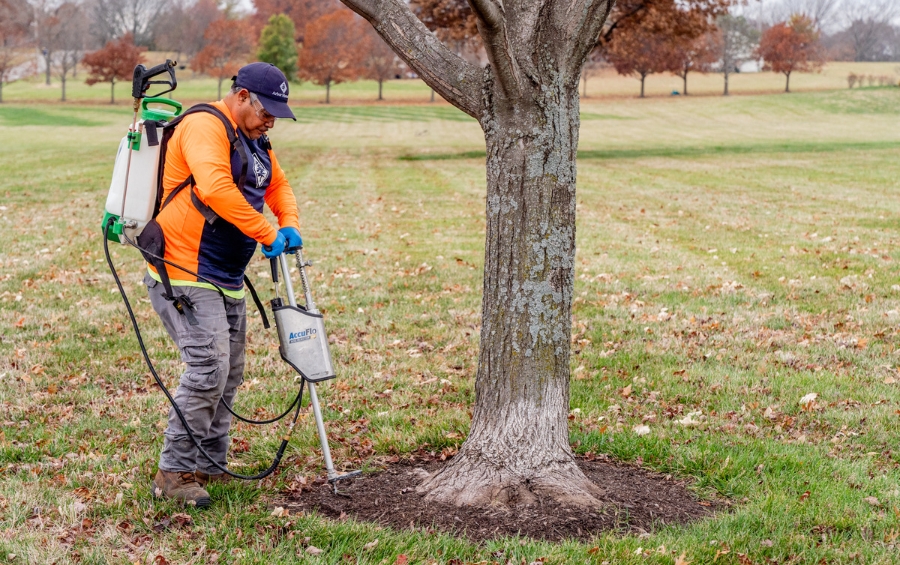
Soil Amendments and Testing
Getting your soil tested is certainly a great step toward improving trees’ autumn display. Soil testing removes the guesswork from tree nutrition and often reveals hidden problems preventing those optimal fall colors. Many Midwest soils, particularly in Kansas City’s clay-heavy regions and areas around Des Moines, have specific deficiencies that directly impact color production, including:
- High pH Levels: Prevent nutrient uptake, especially iron absorption.
- Nitrogen Deficiencies: Limit overall tree vigor and energy for pigment production.
- Micronutrient Shortages: Directly affect anthocyanin and carotenoid development.
- Soil Compaction: Restricts root development and water infiltration.
- Poor Drainage: Creates anaerobic conditions harmful to root health.
Among these deficiencies, iron deficiency is particularly problematic because it causes iron chlorosis, turning leaves yellow instead of their natural red or orange colors. This condition is especially common in alkaline soils throughout Kansas, Oklahoma, and parts of Missouri, making soil testing essential for identifying treatment needs before color problems ever develop.
Customized Soil Treatment Programs
Professional soil testing analyzes pH levels, nutrient content, and organic matter percentage throughout your property. This comprehensive analysis allows our Certified Arborists to create targeted treatment programs that directly address the specific soil conditions limiting your trees’ fall color potential.
For example, we might recommend lime applications to lower pH in alkaline soils common around Tulsa and Oklahoma City, or targeted micronutrient treatments for properties in Springfield and Peoria. By addressing underlying soil issues through professional testing and treatment, trees can access the nutrients they need to produce the spectacular fall colors they’re genetically capable of displaying.
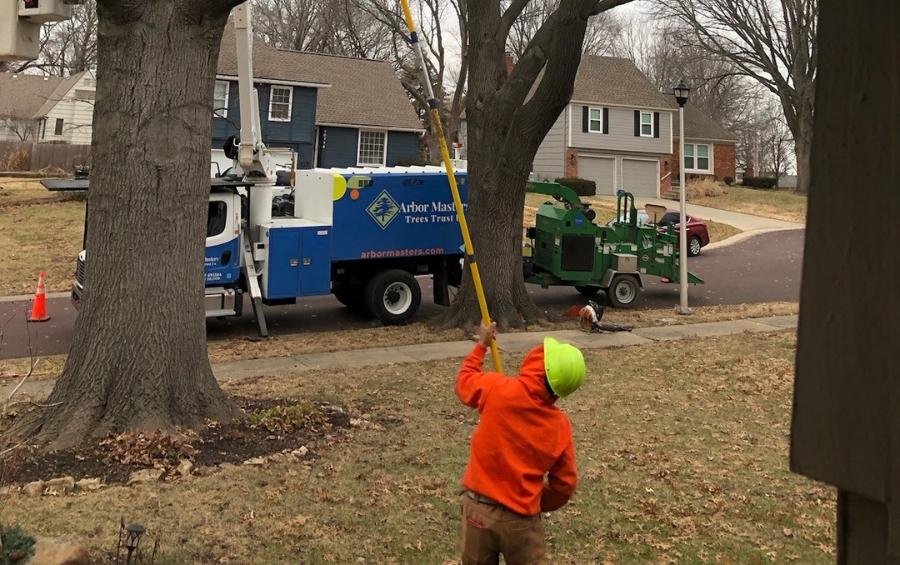
Pruning and Trimming
The dormant season, from late fall through early spring, offers the best window for major pruning work. Strategically scheduling your pruning during this time has a direct impact on your trees’ ability to produce spectacular fall colors, but many homeowners might not realize when pruning helps versus hurts color development.
Winter pruning, particularly between December and February, enhances next fall’s colors by allowing trees to direct their energy toward producing:
- Healthier foliage with better color potential
- Stronger branches that support larger leaves
- Improved nutrient distribution throughout the canopy
- Enhanced light penetration for anthocyanin production
When you remove dead, diseased, or crossing branches during dormancy, trees can allocate more resources to remaining healthy branches, resulting in larger leaves with better color potential.
Did You Know? Light exposure plays a direct role in how vividly leaves change color in fall. Sunlight stimulates the production of anthocyanins, so when interior branches are too shaded, those leaves stay dull or turn brown instead. Proper pruning improves light penetration throughout the canopy, helping more leaves develop rich, consistent fall color without compromising the tree’s natural form.
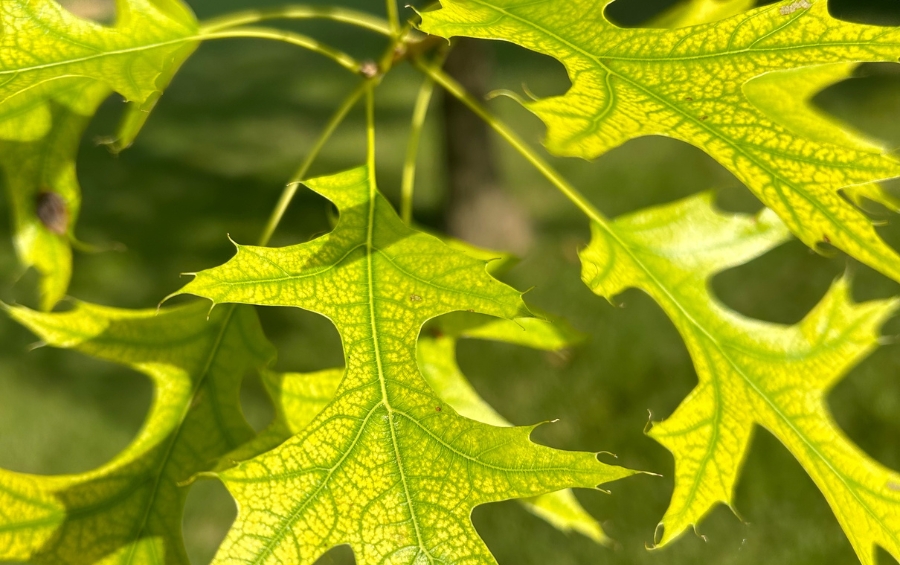
Iron chlorosis causes leaves to remain yellow instead of developing their natural red and orange fall colors.
Watering and Mulching
Proper watering throughout the growing season directly impacts fall color intensity, but many homeowners unknowingly damage their trees’ color potential through incorrect watering practices. Trees need consistent moisture to produce the sugars that create anthocyanin pigments, but overwatering can be just as damaging as drought stress.
Clay soils common throughout Missouri and eastern Kansas require special attention. These soils hold water well but drain slowly, creating conditions where surface soil appears dry while root zones remain waterlogged. Signs of overwatering in clay soils include:
- Yellowing leaves during growing season
- Poor fall color development despite adequate rainfall
- Early leaf drop or wilting during wet periods
Sandy soils in parts of Oklahoma and Illinois drain quickly and require more frequent applications but smaller amounts per session. These soils benefit from organic matter additions to improve water retention.
Proper Mulching for Moisture Management
Mulching around trees helps maintain consistent soil moisture while preventing competition from grass. Apply 2-4 inches of organic mulch in a circle extending to the drip line, keeping mulch 3 inches away from the trunk to prevent pest problems.
TIMING TIP: The critical late summer period from August through September determines fall color intensity. Trees experiencing drought stress during this window often produce poor colors because they lack energy to manufacture anthocyanins.
What’s the Best Schedule for Tree Care to Enhance Fall Foliage?
Creating spectacular fall colors requires year-round planning and strategic timing of tree care services. This comprehensive approach ensures your trees receive proper care when they need it most for optimal color development.
Annual Tree Care Calendar for Maximum Fall Color Impact
| Season | Primary Tasks | Color Impact | Timing Notes |
|---|---|---|---|
| Late Fall (Nov-Dec) |
Deep root fertilization, organic mulch application | High – provides nutrients for next year’s pigment production | After dormancy, but before ground freeze |
| Winter (Jan-Mar) |
Structural pruning, dead wood removal | Medium – improves light penetration and energy distribution | Dormant season, allows for visible branch structure |
| Early Spring (Mar-Apr) |
Iron treatments, soil testing, pest prevention | High – prevents chlorosis and nutrient deficiencies | Before bud break when soil is more workable |
| Late Spring (May-Jun) |
Pest management, disease monitoring | Medium – protects leaf health throughout growing season | Active growth period when pests emerge |
| Summer (Jul-Aug) |
Watering programs, stress monitoring | High – maintains energy reserves for pigment production | Heat stress periods exacerbates drought conditions |
| Early Fall (Sep-Oct) |
Continue watering, avoid major interventions | Critical – support active color development | Color development period when trees prepare for dormancy |
Frequently Asked Questions About Fall Tree Colors in the Midwest
Will professional tree treatments work on trees that have never shown good fall colors?
Many trees with poor color history respond dramatically to comprehensive care addressing underlying health issues. We’ve transformed 30-year-old trees that never showed decent fall colors into neighborhood showstoppers through targeted nutrition, soil amendments, and disease treatments. The key is identifying and correcting the specific factors limiting your trees’ color potential, whether that’s iron chlorosis, soil compaction, or nutrient deficiencies.
How does climate change affect fall color development in the Midwest?
Changing weather patterns can delay or diminish fall colors, but healthy trees adapt better to climate variability. Trees with strong root systems and proper nutrition maintain color potential even during unusual weather patterns. Professional care becomes more important as climate stress increases, helping trees build resilience against temperature fluctuations and irregular precipitation patterns affecting pigment production.
Do different tree species require different color enhancement strategies?
Yes, species-specific approaches yield better results than generic treatments. Oaks benefit most from iron supplementation and soil pH management, while maples respond well to balanced fertilization and consistent moisture. Native species generally require less intervention than exotic varieties, but all trees benefit from customized care based on their specific genetic color potential and local growing conditions.
Enhance the Autumnal Beauty of Your Midwest Trees With Arbor Masters
Transform your property into an autumn masterpiece with professional tree care designed specifically for Midwest conditions. Our TCIA-accredited team has been enhancing fall colors across Missouri, Kansas, Iowa, Illinois, and Oklahoma since 1960. From comprehensive soil testing to strategic fertilization programs, we provide the expert care your trees need to reach their full color potential.
Contact Arbor Masters today at 816-781-8914 or request your free consultation to discover how professional tree care can create the spectacular fall display you’ve always wanted.

Get the latest local news, tree care tips, special offers, and company updates directly to your inbox! It's easy to subscribe and there's no spam - we promise.
"*" indicates required fields


